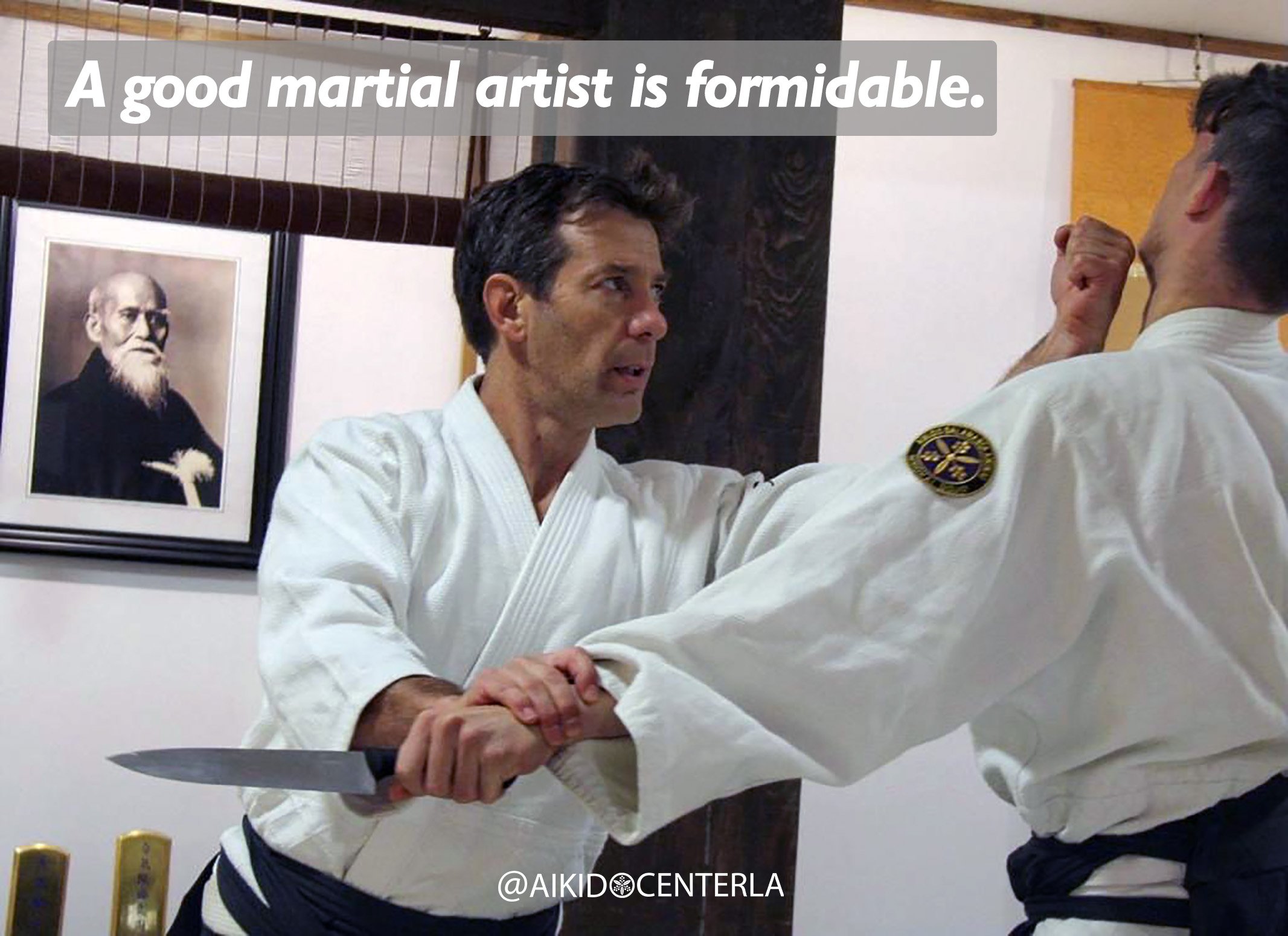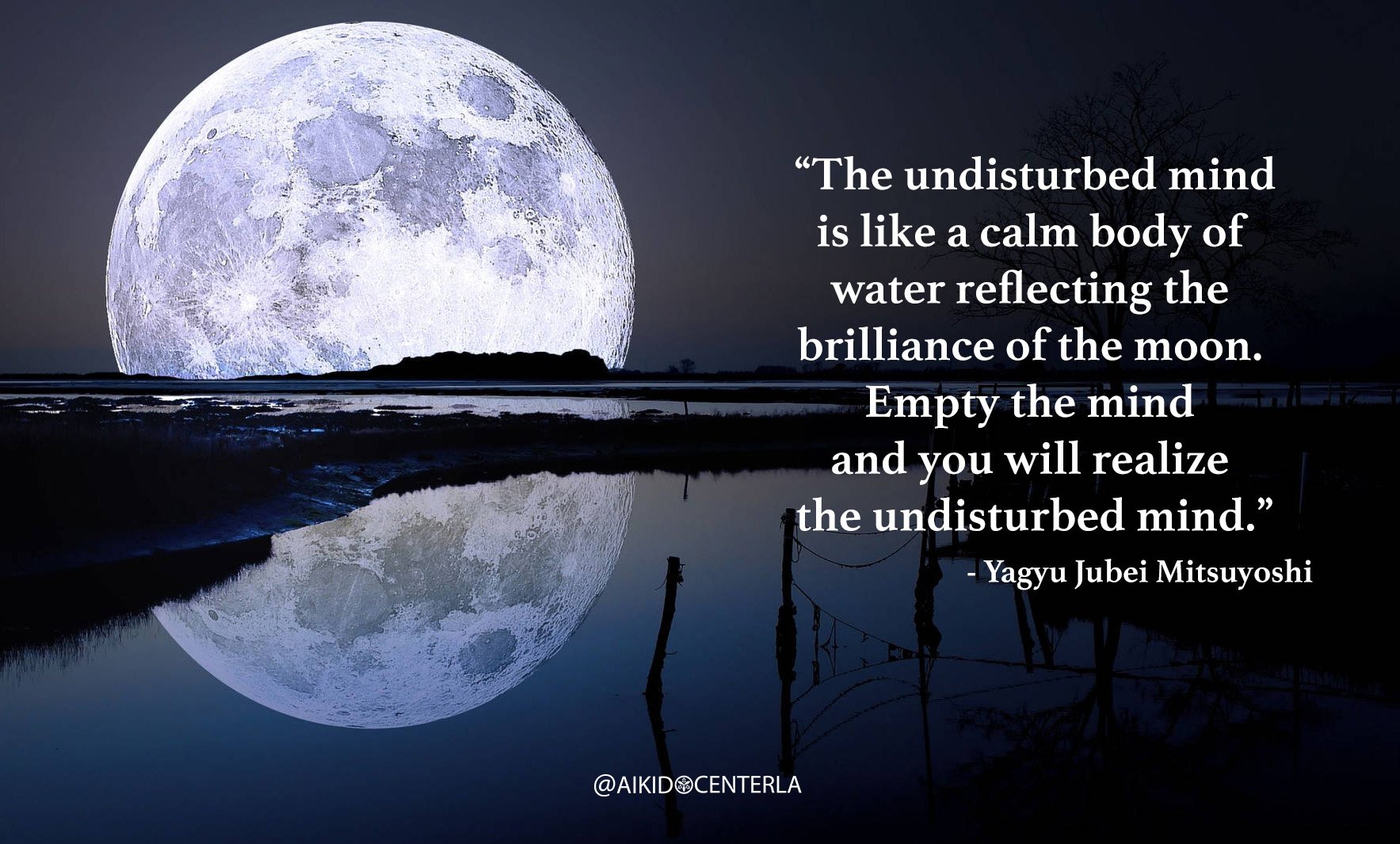This article originally appeared in the Spanish language magazine El Budoka. Read the Spanish version here: El Budoka
The best martial artists attack their opponent’s Ki with their Ki.
In the 1940s, 10th Dan Kendo legend, Moriji Mochida was demonstrating Kendo in front of the Emperor of Japan during the Emperor's Cup Kendo tournament at Noma Dojo. At this demonstration, some say Mochida reached a place of enlightenment with the sword. During the match, Mochida effortlessly struck his opponent and calmly and deftly parried every one of his opponent’s aggressive attacks. It is said that Mochida’s seme (攻め) or “attacks” were almost supernatural because he seemed to lead his opponent’s attacks which caused his opponent to miss.
When we attack our opponents minds or thoughts it is called kizeme (氣攻め) or “to attack their Ki.” In swordsmanship, to understand seme, students must learn it through something called san sappo (三殺法). San sappo are “the three ways of using a sword” or “three ways to kill.” The three sappo are: ken wo korosu (剣を殺す) or “to defeat the sword,” waza wo korosu (技を殺す) or “to defeat the technique,” and ki wo korosu (氣を殺す) or “defeat the spirit.” It is obvious from this list that the first two sappo are easy to obtain because they are tangible or perceivable to the naked eye. The last sappo requires a great deal of skill brought about by a lot of practice. Each sappo seems to build upon the previous one.
To defeat our opponent’s sword, we must become one with the sword. One way to think of this is that we learn how to use the sword, and this is also where we begin to develop our cut with the sword. Here we learn how to properly grip the sword, properly swing the sword, and build up our stamina. The other day in swordsmanship class, Watanabe Sensei said, “Proper grip usually means proper posture and a balanced center which enables us to create a proper attack.”
To defeat our opponent’s technique, we must make the sword part of us. One perspective is that the sword naturally moves with the movements of our bodies. Our bodies, arms, and sword move as one unit which enables us to issue power efficiently and effectively.
The final level of combat is done in the mind. Once we have mastered the physical or how to defeat our opponent’s sword and technique, then we harden our minds. Our opponent uses their development at the first two levels to unnerve us and attack our Ki. When our minds have been overcome, this is referred to as kyo-jitsu (虚 実). Kyo-jitsu refers to one’s state of mind where we strike our opponent when we are in a faster subconscious instinctive mindset because our minds haven’t been compromised. We get led astray and get hit because our minds have been attacked and unnerved and here we are in a slower reactionary state of conscious mindset called kyo.
Ideally, when we have aligned the Ki of our bodies and our minds, then our Ki becomes unified. Then, theoretically, when we have aligned the Ki within ourselves, then we become immediately aligned with the Ki of the universe and we become enlightened just like Moriji Mochida.
Therefore, at the highest levels, the best martial artists rely more on the development of their Ki rather than their physical technique. However, understanding this, Ki is one of those concepts that is regularly misunderstood.
Ki means “life force” or “energy” and its kanji (氣) is made up of the radical for steam or breath (气) and is combined with the character komei (米) or “rice.” This explanation gives us a physical representation of the theory that Ki is “energy.” The stored energy is released in the form of steam as the rice is cooked. When I was in acupuncture school, they defined Ki as “energy about to become matter and matter about to become energy.” Both of these explanations help us to understand the word or concept of Ki but don’t help us to understand how to cultivate it or use it.
There are a lot of techniques and theories available as to how to best cultivate one’s Ki. Koichi Tohei and his devotees have a lot of Ki exercises which are designed to help us activate our Ki. It is my opinion that, at the beginning, most students use physical strength or employ biomechanics instead of actually using their Ki to make the Ki exercises work. I posit that most Ki exercises or techniques can’t actually be learned but, rather, those exercises are demonstrations of one’s Ki ability.
When I was a student, Furuya Sensei rarely ever spoke about Ki. The only times that he spoke about Ki in Aikido were at public demonstrations or at seminars. In his day to day classes, the focus was on technique development and not digesting theoretical ideas. The reason for this is because abstract theories can easily lead students astray and that Aikido is, first and foremost, a martial art. To support Furuya Sensei’s methodology, in Zen and Confucius in the Art of Swordmanship by Reinhard Kammer, the master replies, “Swordsmanship is basically the exercising of the Life Force and, therefore, at the beginning of the study the Life Force is exercised by means of technique.” Therefore, it is my understanding that one’s Ki will naturally be cultivated by just practicing kihon-waza or the basic techniques on a daily basis.
Now, with that being said, there is a time and place for everything. It is thought that a student should start to cultivate their Ki and attack their opponent’s Ki at around sandan or 3rd degree black belt. The rationale is that 3rd Dan is where we should have cultivated a certain amount of technical ability and thus the natural progression of training turns inward.
The only problem is that 3rd Dan takes about 15-20 years. In my experience, a couple of ways to speed up one’s cultivation of Ki is with meditation and breathing exercises.
Meditation enables the practitioner to still their minds. When our Ki is calm or heiki (平氣), then our minds are calm and composed. The highest teaching in Budo is equanimity. Equanimity is a type of enlightenment for martial artists because they have the ability to jitsu or act mindfully and not kyo or react mindlessly. Most don’t need more than 30 minutes a day of mediation to help cultivate their Ki.
Breathing exercises teach the practitioner to properly take in more oxygen which steadies the mind and enables the body to focus more appropriately. In Japanese, this is called kigaraku (氣が楽) or “to be at ease." The easiest breathing method is Box Breathing. First, breathe out slowly, releasing all the air from your lungs. Breathe in through your nose as you slowly count to four in your head. Hold your breath for a count of four. Exhale for another count of four. Hold your breath again for a count of four. Repeat for three to four rounds and once or twice a day to help cultivate your Ki.
Utilizing our Ki to defeat our opponent’s is the highest level in any martial arts training. Students and teachers should take care to not start this training too early as physical acquisition should be at the forefront of one’s training. Like Moriji Mochida, when we can attack our opponents Ki with our Ki, we can lead their Ki and almost dictate their movement. When we are attacking someone’s mind or Ki, it opens them up to being defeated and that’s why the best martial artists attack their opponent’s Ki with their Ki.





















